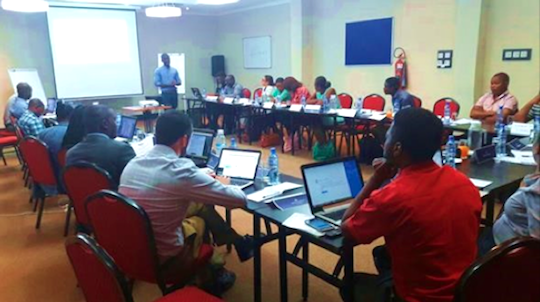Welcome to our first post-US election update! Many of us, in the US and around the globe, continue to be moved, activated and concerned by the recent US election. We have been grateful for forums exploring how our work may be affected by various political scenarios, including this call on the future of Global AIDS Funding, hosted by GNP+. At the same time, we want to restate our long-standing and vigorous commitment to our ongoing work, which will continue with the same rigor as ever, in pursuit of our mission.
In that spirit, this update highlights recent developments in biomedical prevention research. Together they serve as a great example for why a pro-science, pro-research, pro-stakeholder engagement agenda is a non-negotiable necessity, irrespective of politics and political parties.
New basic science provides clues on cure and vaccines. Earlier in the month, two papers were published regarding new innovations in HIV prevention and cure.
A paper authored by Katharine Bar at UPenn and colleagues reported on the effect of the antibody VCR01 in people living with HIV. In these trials, people living with HIV stopped their antiretroviral treatment (ART) while receiving infusions of VRC01, a broadly neutralizing antibody that blocks the activity of many strains of HIV. The study measured the safety of VRC01 and sought to determine if it helped people control their virus while off treatment. Researchers compared viral “rebound” (the reappearance of virus in the body after ART is stopped) between people who received VRC01 and people who did not. Findings show VRC01 only slightly delayed viral rebound. This shows the value of the scientific research field in action, testing and narrowing the field of solutions until we hit the bullseye. VRC01 is also under study as a tool for HIV prevention in the ongoing AMP trials (HVTN 703/HPTN 081 and HVTN 704/HPTN 085), and a number of other antibodies are in various stages of both prevention and therapeutic research.
A paper authored by Dan Barouch of the Ragon Institute and colleagues looked at a strategy for a cure that combines a therapeutic vaccine with a TLR7-agonist. TLR7 is a protein that controls and activates human immune responses. This study looked at non-human primates (NHP) with SIV (the simian version of HIV). The study used the vaccine vector Ad26/MVA from Janssen Pharmaceuticals to instruct immune cells to recognize SIV, and the TLR7-agonist to activate those immune cells. This strategy tested whether the Ad26/MVA/TLR-7 combination would be able to marshal immune cells to eradicate SIV. In the study, non-human primates were put on ART immediately after infection. One group of NHPs received the vaccine alone, another received only TLR7, a third received a placebo and the last received a combination of Ad26/MVA and TLR7. All were then taken off of ART. Those that received the combination had the largest drop in SIV and the longest delay in viral rebound. There are a lot of caveats with animal models, but this finding could add to optimism for the scientific pursuit of an HIV cure. The Ad26/MVA vaccine vector is also being tested as a preventative vaccine, and a large-scale efficacy study of the regimen could begin in 2017.
Community mobilization on the DISCOVER trial of Gilead’s F/TAF as oral PrEP.
An article published on TheBody.com by long-time advocates Anna Forbes and Marc-André LeBlanc outlined the latest developments related to Gilead’s Phase III trial of the drug F/TAF for oral PrEP. The trial, known as DISCOVER, has raised concerns among advocates that stakeholder engagement has been insufficient. The study plans to enroll 5,000 participants from 92 sites across the US and Europe. Participants will be randomized to receive either daily TDF/FTC (Truvada), which is a proven prevention option approved by the US FDA for PrEP in 2012, or daily F/TAF, which is a different version of the drug combination that has been approved for treatment but the efficacy for prevention is unproven. Given the complex messaging of this trial—one that compares an approved option with an experimental one—community engagement over the course of trial planning and execution is imperative. The standards for stakeholder engagement, outlined in the Good Participatory Practice Guidelines, are designed to address this type of trial and should be met. While Gilead has engaged a limited subset of community stakeholders, a group of advocates, representing a range of organizations, submitted a public letter to Gilead on November 16 demanding substantial and meaningful improvements to the process of community engagement. This is the right thing to do and history has shown this process improves the chances for the trial’s success.
- Read the letter here—organizational sign-ons accepted until November 30, 2016.
- Download this factsheet, explaining the trial in plain language.
Decades of testing and research reflected in studies like these are doing the painstaking, instrumental work it takes to move us toward our goal, the end of AIDS. Let’s keep our eyes on the prize.
